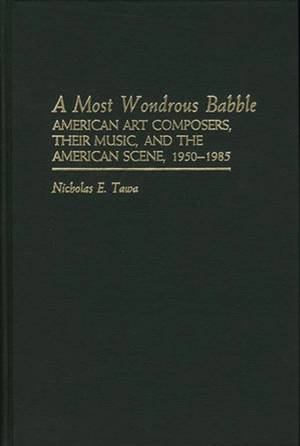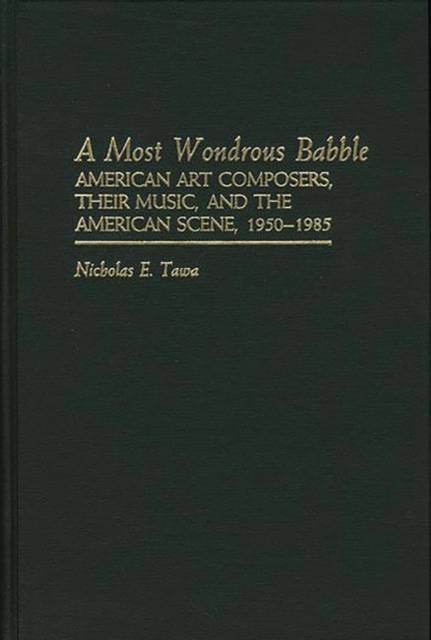
- Retrait gratuit dans votre magasin Club
- 7.000.000 titres dans notre catalogue
- Payer en toute sécurité
- Toujours un magasin près de chez vous
- Retrait gratuit dans votre magasin Club
- 7.000.0000 titres dans notre catalogue
- Payer en toute sécurité
- Toujours un magasin près de chez vous
A Most Wondrous Babble
American Art Composers, Their Music, and the American Scene 1950-1985
Nicholas E Tawa
110,45 €
+ 220 points
Description
Tawa considers the musical and social ramifications influencing the American composer between 1950 and 1985. He draws information from composers, music reviewers, and from his own listening experiences. Tawa's common theme is the gulf between what the composer (or critic) says about the music and how the public experiences it. . . . More than 50 composers are considered. . . . Tawa . . . goes beyond biographical detail to help the reader to `understand the reasons for the deep abyss separating contemporary composer and listener'. Choice
The decades following World War II witnessed an explosion of musical creativity in America. Unfortunately, they also witnessed a widening abyss between the contemporary composer and his or her audience. Confusion on the part of the modern listener is an all-too-frequent phenomenon when he or she is confronted by the extraordinary profusion of contemporary musical styles. This useful volume is intended to relieve some of that confusion. Insightful commentaries and a highly readable text combine to focus on all contemporary musical styles from the most traditional to the most experimental in relation to modern American life. Taking the position that music is a transaction between creator/composer and listener, the author considers ways in which each faction may become more aware of the other's imperatives, thereby sponsoring a new and mutually meaningful music.Spécifications
Parties prenantes
- Auteur(s) :
- Editeur:
Contenu
- Nombre de pages :
- 302
- Langue:
- Anglais
- Collection :
Caractéristiques
- EAN:
- 9780313256929
- Date de parution :
- 15-05-87
- Format:
- Livre relié
- Format numérique:
- Genaaid
- Dimensions :
- 140 mm x 216 mm
- Poids :
- 530 g

Les avis
Nous publions uniquement les avis qui respectent les conditions requises. Consultez nos conditions pour les avis.






